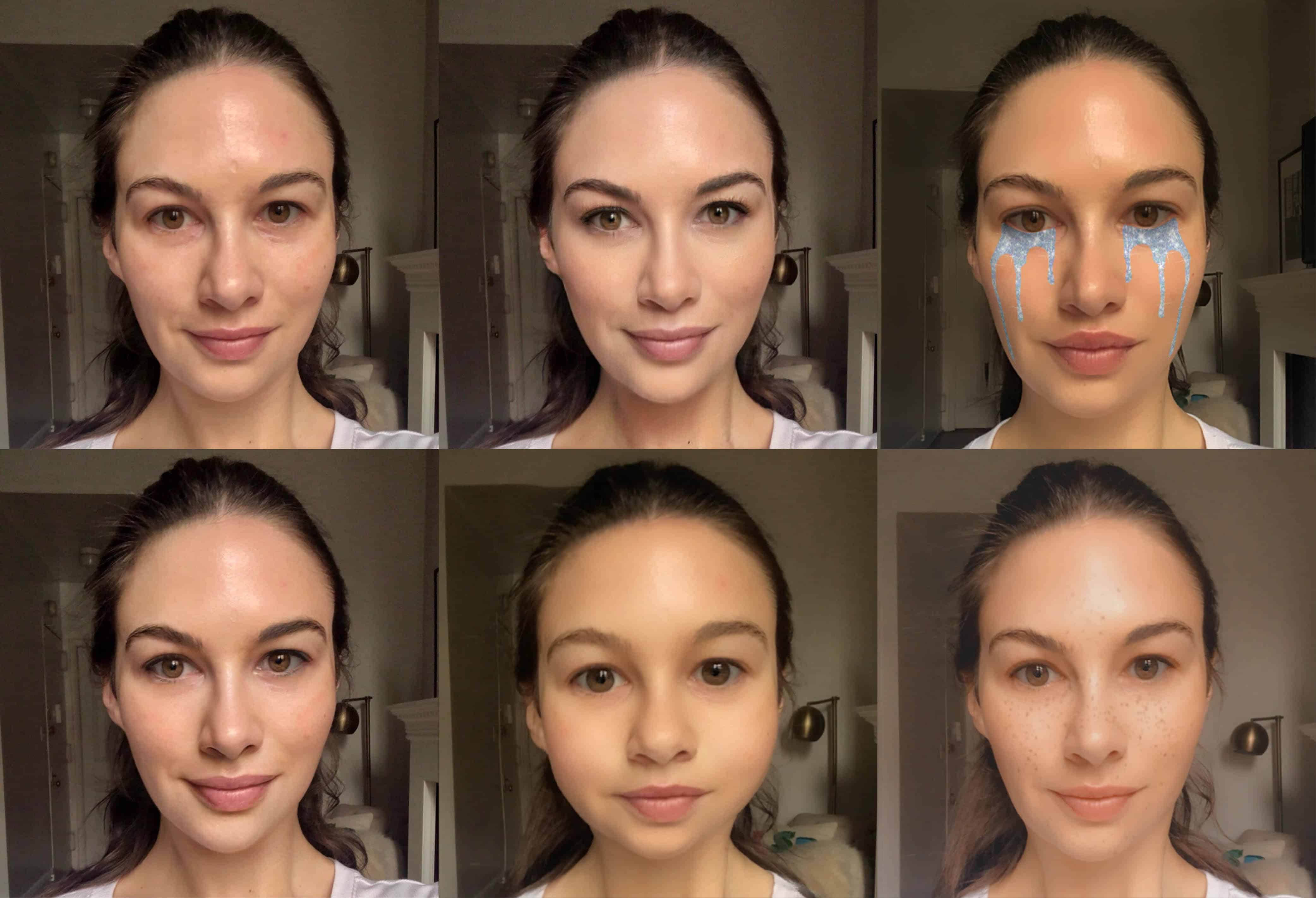Add a filter every time you talk on your Instagram Story or run all your photos through FaceApp before posting for long enough, and you start to lose touch with the reality of how you actually look to other people. It’s more jarring to see a candid of ourselves today than it was 10 years ago because we’ve grown so accustomed to strategically controlling our own lighting, angles, and skin texture. And while it’s true that, for the most part, we all look better with a subtle filter that evens out tone issues, does away with shadowing under the eyes, and balances out asymmetry, things can get wonky when an app dramatically increases the size of our eyes or narrows the width of our nose.
Doctors say these sorts of filtered selfies can create unrealistic expectations of what surgery and injectables can—and should—do for the face, yet they’re what many patients are requesting to look like. To understand how apps are digitally altering us to look “prettier” and which changes are actually achievable in the real world, I asked three plastic surgeons to compare my unfiltered, makeup-free selfie with five filtered selfies from popular apps. Below, they sound off on the aesthetic improvements and missteps made by computer technology, and just how many syringes of filler I’d need for Insta-worthy lips.
Writer’s note: Because the front-facing camera used for in-app selfies is a mirror image, the left side of the photo is the right side of the face in reality. Doctors say it’s common for people to bring in these images (we tend to prefer our mirror image to the flipped version), but they always speak about the real face.
Original
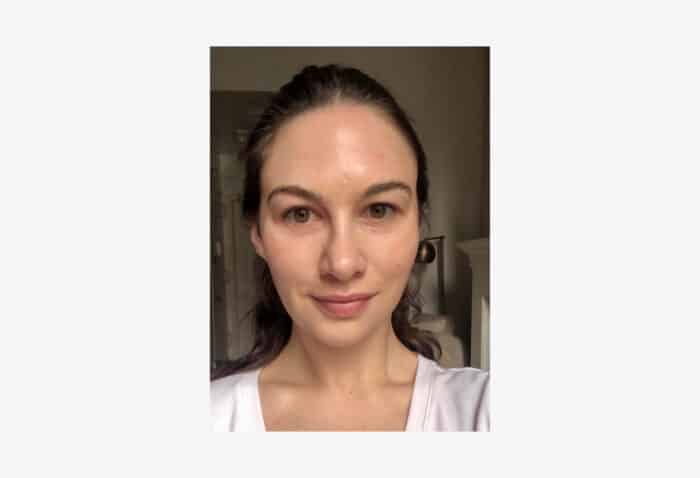
“When someone comes in and asks, ‘How can I 100% optimize?’ I like to look overall, then go top to bottom. Everybody has asymmetry in their face, and that’s the first thing I look for. Your right side [left side of photo] is less full. You could use a little bit of filler to rotate that side more forward, to be similar to the other side.
“Your brows look pretty even, but that little bit of asymmetry translates a tiny bit: the right side [left side of photo] is a teeny bit lower. The upper eyelid is a bit full—opening the eye would make you brighter and show your lashes more.
“The lips have a little bit of that asymmetry too, where you can see that the nasolabial fold on your left side [right side of photo] is higher than the other. You could use filler along the jawline to help rotate that side forward to match.” —Dr. Dara Liotta, board-certified facial plastic surgeon in New York City
“Overall, you have great skin quality. You do see some imperfections in the texture and coloration of the skin, what looks like a scar in the central forehead, a little bit of redness, some hyperpigmentation on the cheek, and some fine lines.
“I think your left brow [right side of photo] is a little bit higher than the right, and you have more upper-lid hooding on the left side. There’s some hollowing in the under-eye.
“If you look at the mid-space, there is a stronger cheekbone on the left [right side of photo] and a little bit of a fuller appearance of the face. And then on the right [left side of photo], there is more thinness, more temporal hollowing, and a bit more early jowling on the right side.” —Dr. Lara Devgan, board-certified plastic surgeon in New York City
“When you examine a photo, you always look first at the eyes, then the lips, the cheeks, and the nose last. You’ve got big brown eyes but slightly more hooding on your left side [right side of photo] and a deepening of the tear trough. The left eye might sit slightly deeper in the socket.
You have a good ratio for lips, with the lower lip being about twice the size of the top. The golden ratio is 1.6, and you’re 1.5 to two times the size. If they’re done, they’re not overdone. Iif they’re natural, you’re gifted.
Your cheeks are beautiful—people pay me a lot of money to get cheeks like yours—but the right cheek is slightly narrower than the left cheek, and that’s going to create some asymmetries. We would want to put a little more filler to widen your right cheek [left side of photo].
Then there are some pigment issues—a little bit of brown, a little bit of red.” —Dr. Steven J. Pearlman, board-certified facial plastic surgeon in New York City
FaceApp: “Hollywood”
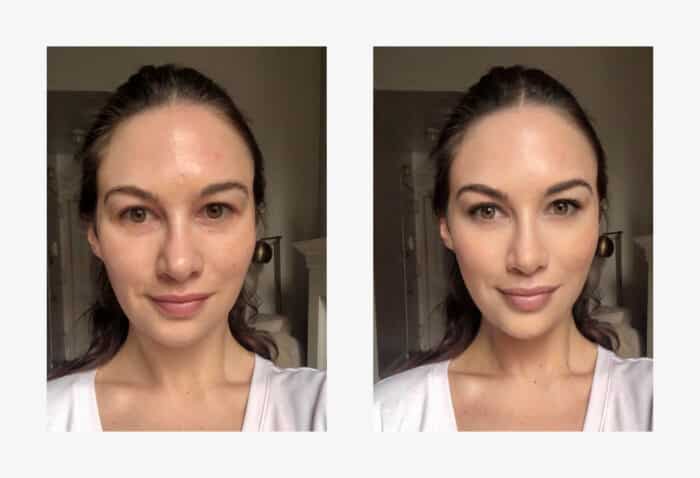
“What it’s done is make you more symmetric. It’s compensated for that little bit of volume discrepancy, especially in the lower face. It put mascara on your eyelashes, filled in your brows, and airbrushed the skin tone. Blowing the photo out gets rid of the shadows, so if you look at the under-eye, it kind of blurs because there are no highlights or lowlights.” —Dr. Liotta
“There’s an improvement in skin texture and coloration, more brow symmetry, a greater degree of eyebrow arch, a more delicate nose, more fullness of the lips, and a stronger cheekbone on both sides. But the biggest change here is in the under-eye area, where the lid/cheek junction is very smooth.” —Dr. Devgan
“Most of these apps tend to do the old-fashioned trick of putting a stocking over the camera lens. It just softens all the facial tones and any folds or wrinkles or lines, so your forehead scar looks better and the tear trough is softer. If you look at the chin, you don’t have a sharp, demarcated outline—it’s like someone took a blending tool and just blended it out.” —Dr. Pearlman
FaceApp: “Kiss”
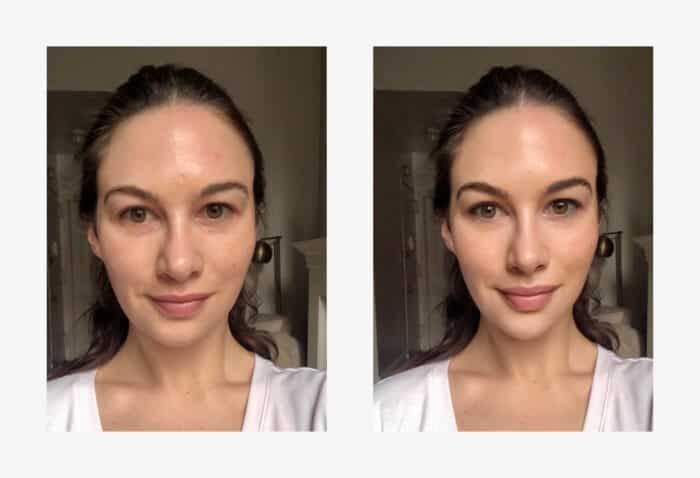
“This definitely gave you quite a bit of lip volume. This isn’t realistic for one treatment. You have a nice lip ratio to begin with, and what it did was increase the volume of both lips but a bigger percentage on the bottom. To be honest, I don’t love the way [the app] increased it—I like your upper lip, but your lower is too big. This is probably at least three syringes of filler, which I would do two weeks apart, so it’s six weeks of filler.” —Dr. Liotta
“There is a pretty dramatic increase in the size of the lips. This is something that you might expect from two to three syringes of injectable fillers. There’s an increase in vertical lift height and Cupid’s bow definition, and there’s more eversion and poutiness of the central lower lip. This is something that can be used as a reference point or inspiration image, but just to manage someone’s expectations, I would say that this may not be achievable in one session or with one syringe. The lower lip is a little big for my taste, but there’s so much individuality in what people think looks good.” —Dr. Devgan
“It increased the lips fairly symmetrically, so the bottom is still bigger than the top, but it’s too much and it overwhelms your face. You already have really nice lips, and it makes you almost look like the Joker. You want to notice the eyes first, that’s how people naturally look at a face, and when I look at this, I’m drawn to the lips. It’s distracting, which isn’t a good thing.” —Dr. Pearlman
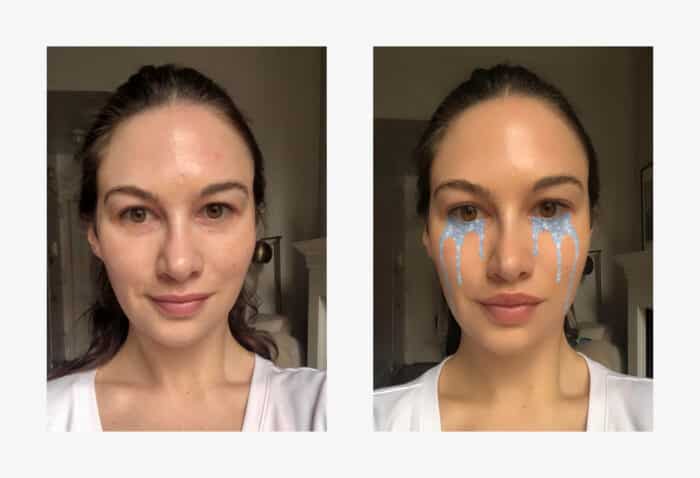
“Believe it or not, this is a nicer lip ratio, although it is a lot—probably five syringes. It looks like a lip lift in addition to filler. The bridge of the nose is narrower, but I think it looks worse, it’s too pinched. And it looks like the actual size of your eye is bigger.” —Dr. Liotta
“The lips are significantly fuller, and the nose is significantly thinner, with more nostril showing and more of an upturn as well. The entire shape of the face is altered to an exaggerated heart shape, and probably the biggest change I’m noticing is that the eyes are 20% bigger.” —Dr. Devgan
“I don’t like that the lips are now out of proportion. The upper lip is much bigger in proportion to the lower lip, and it almost looks too narrow, like you’re puckering. I think your skin tone looks a little too yellow, and the nose is now crooked.” —Dr. Pearlman
Snapchat: “Baby”
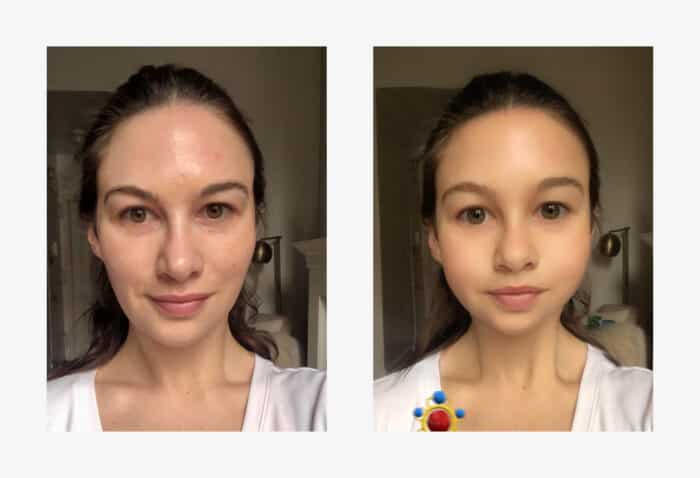
“The biggest difference here is the proportions. You have more fullness in the cheek where a buccal fat pad would be, the nose is wider and shorter, and your lips have been made into a pucker so you have more volume toward the center and less toward the side. Your eyes are bigger, and you have more fullness in the tear trough—like a baby, basically.” —Dr. Liotta
“You have all the classic features of a youthful face: smoothness of complexion, a low, full eyebrow position,; large eyes,; fullness of the cheek and lips, a very small chin, and a rounder face.” —Dr. Devgan
“The baby app is what a baby’s face looks like—or someone who has had way too much filler. When I treat cheeks in young women, I do what I call runway cheeks and highlight the arch. In mature women, they want to restore loss of volume, which happens more at the front of the cheek. This app filled you out lower down, in the area of the buccal fat pad.
“The face is like an egg. Babies start with the egg wider on the bottom of their face, then from your teenage years to your 30s, your face gets wider on top and narrower on the bottom. Then as you age, it inverts again and the lower face gets heavier. But this is almost a caricature.” —Dr. Pearlman
Snapchat: “Freckles”
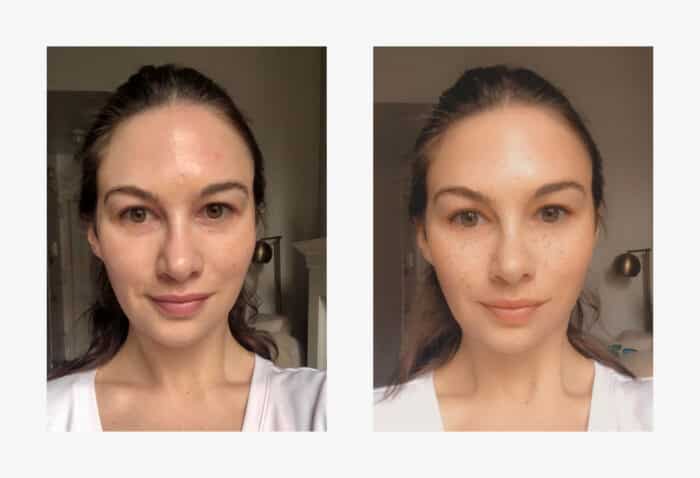
“This made the lower face more symmetric and gave you nasolabial filler by blowing out the light. There’s also a lot of under-eye filler here.” —Dr. Liotta
“You really get an improvement in skin quality with this. There is a one- to two-millimeter increase in eyebrow arch and height, so the brows are a little bit more feminized and the eyes are 5–10% larger, with more of the eyelid showing. The nose has been made more narrow. There’s a slight change in lip shape that isn’t as obvious as others, but the lips are more vertically augmented, and then the shape of the face is more heart-shaped. The prettiness changes are more subtle overall.” —Dr. Devgan
“It gives you perfectly smooth skin and it makes your face thinner. It creates the same amount of distance from the eyelashes to the eyelid on each eye. There aren’t really nasolabial folds, but you’re supposed to have a fold from the cheek to the lip—we’re not meant to have a straight line there. People come in and want straight lines there, and we try to talk them out of it because it doesn’t look natural. Look at an 8-year-old—they have deep nasolabial lines. To me, after the baby filter, this is the most unnatural one.” —Dr. Pearlman







